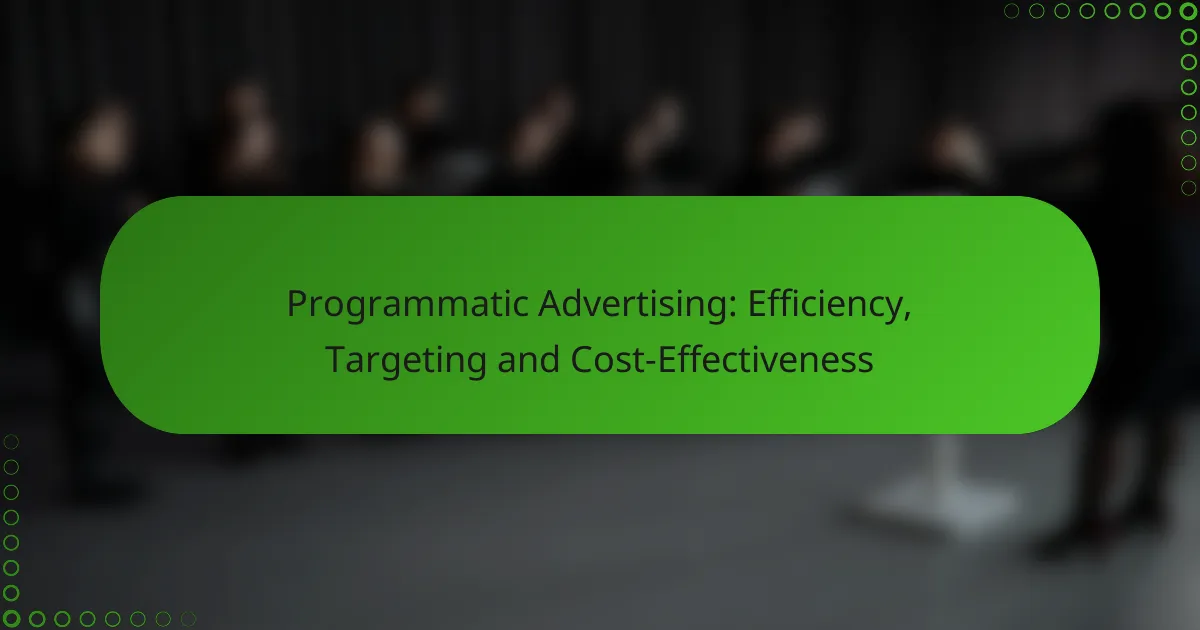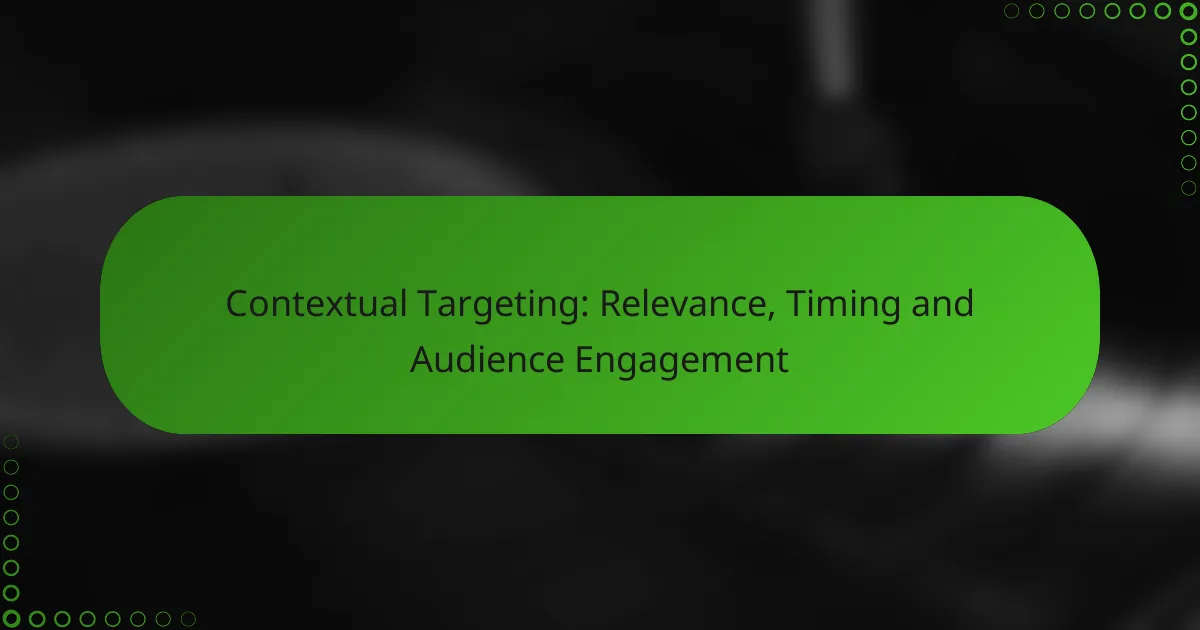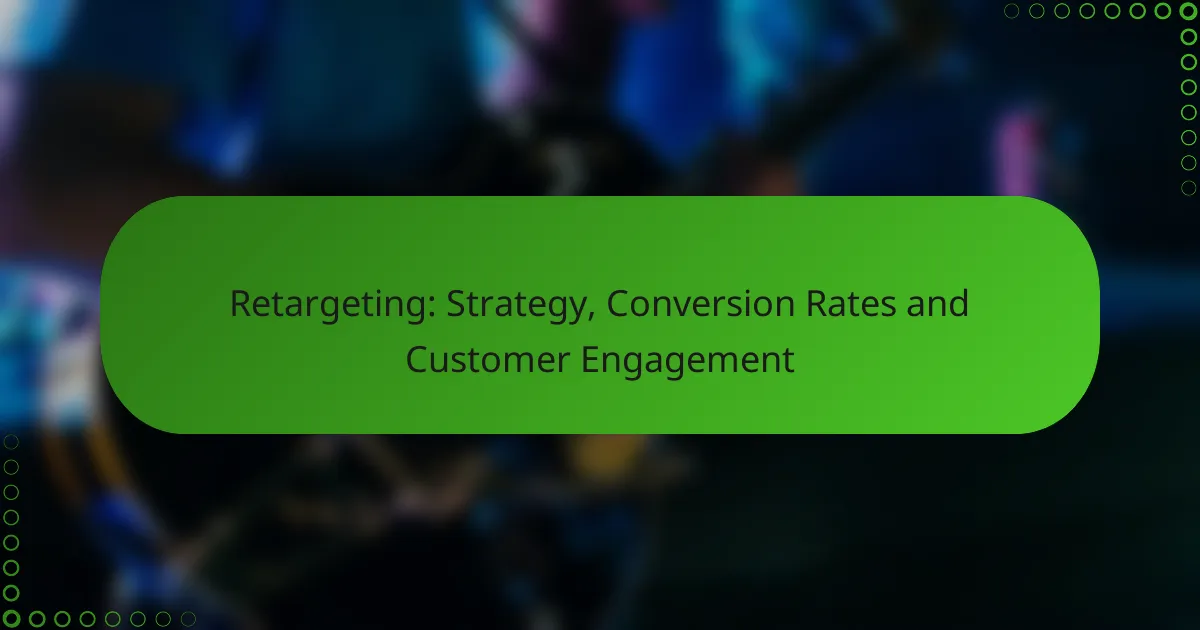Programmatic advertising revolutionizes the display advertising landscape by automating the buying and selling of ad space, leading to increased efficiency and optimized resource allocation. With advanced targeting options such as behavioral, geographic, and demographic targeting, advertisers can precisely reach their desired audiences. Additionally, the cost-effectiveness of programmatic advertising allows for better budget management, often resulting in lower overall expenses compared to traditional methods.

How does programmatic advertising improve efficiency in display advertising?
Programmatic advertising enhances efficiency in display advertising by automating the buying and selling of ad space, allowing for quicker transactions and better resource allocation. This technology streamlines processes, reduces manual effort, and optimizes ad placements based on real-time data.
Automated ad buying processes
Automated ad buying processes eliminate the need for traditional negotiations and manual insertion orders, making transactions faster and more efficient. Advertisers can set parameters for their campaigns, such as target audience and budget, and the system automatically executes purchases based on these criteria.
This automation not only saves time but also minimizes human error, ensuring that ads are placed correctly and within budget. As a result, advertisers can focus more on strategy and less on logistics.
Real-time bidding advantages
Real-time bidding (RTB) allows advertisers to bid on ad impressions in milliseconds, ensuring that they only pay for the placements that meet their specific criteria. This competitive bidding process increases the chances of reaching the desired audience at the right moment, enhancing overall campaign effectiveness.
With RTB, advertisers can adjust their bids dynamically based on performance metrics, maximizing return on investment. This flexibility is crucial in a fast-paced digital environment where audience behavior can change rapidly.
Data-driven decision making
Data-driven decision making is at the core of programmatic advertising, enabling advertisers to leverage vast amounts of data for targeting and optimization. By analyzing user behavior, demographics, and engagement metrics, advertisers can refine their strategies and improve ad relevance.

What targeting options are available in programmatic advertising?
Programmatic advertising offers various targeting options that enhance the precision and effectiveness of ad campaigns. These options include behavioral, geographic, and demographic targeting, each allowing advertisers to reach specific audiences based on their preferences, locations, and characteristics.
Behavioral targeting techniques
Behavioral targeting techniques focus on users’ online behavior, including their browsing history, search queries, and interactions with ads. By analyzing this data, advertisers can serve personalized ads that align with users’ interests, increasing the likelihood of engagement.
Common methods include retargeting, where ads are shown to users who have previously visited a website, and contextual targeting, which places ads based on the content of the page being viewed. These strategies can significantly improve conversion rates, as they target users who have already expressed interest in similar products or services.
Geographic targeting capabilities
Geographic targeting capabilities allow advertisers to deliver ads based on users’ physical locations. This can range from broad targeting, such as entire countries or regions, to more granular options like specific cities or even neighborhoods.
Utilizing geographic data helps businesses tailor their messaging to local audiences, making it particularly effective for local businesses or events. For instance, a restaurant can target ads to users within a few miles, ensuring their promotions reach potential customers nearby.
Demographic targeting strategies
Demographic targeting strategies involve segmenting audiences based on characteristics such as age, gender, income level, and education. This approach enables advertisers to create campaigns that resonate with specific demographic groups, enhancing relevance and effectiveness.
For example, a luxury brand may focus its ads on higher-income individuals aged 30-50, while a children’s toy company might target parents with young children. Understanding the demographics of the target audience helps in crafting messages that appeal directly to their needs and preferences.

How cost-effective is programmatic advertising compared to traditional methods?
Programmatic advertising is generally more cost-effective than traditional advertising methods due to its automated processes and precise targeting capabilities. This approach allows advertisers to maximize their budgets by reaching specific audiences more efficiently, often resulting in lower overall costs.
Lower cost per impression
Programmatic advertising typically offers a lower cost per impression compared to traditional media buying. Advertisers can bid in real-time for ad placements, which often leads to more competitive pricing. For instance, the cost per thousand impressions (CPM) can be significantly reduced, sometimes falling into the low single-digit range, depending on the platform and targeting options.
In contrast, traditional advertising methods, such as print or television, usually involve fixed pricing structures that do not allow for the same level of flexibility or negotiation. This can lead to higher costs without the guarantee of reaching the desired audience.
Budget optimization features
Many programmatic platforms include budget optimization features that help advertisers allocate their spending more effectively. These tools analyze performance data in real-time, allowing for adjustments to be made on the fly. Advertisers can set daily or campaign budgets and utilize features like automatic bidding to ensure they are getting the most value for their investment.
Additionally, programmatic advertising allows for granular targeting, which means budgets can be directed toward the most responsive audience segments. This targeted approach can lead to better utilization of funds and a higher return on ad spend.
Return on investment analysis
Analyzing return on investment (ROI) in programmatic advertising is straightforward due to the wealth of data available. Advertisers can track key performance indicators (KPIs) such as click-through rates, conversion rates, and overall sales attributed to ad campaigns. This data-driven approach enables advertisers to assess the effectiveness of their spending and make informed decisions for future campaigns.
To maximize ROI, it is crucial to continuously monitor and adjust campaigns based on performance metrics. Advertisers should focus on high-performing segments and consider reallocating budgets from underperforming areas to enhance overall campaign effectiveness. Regular analysis can lead to improved strategies and better financial outcomes over time.

What are the prerequisites for implementing programmatic advertising?
To implement programmatic advertising effectively, businesses need a combination of technology, data management capabilities, and strategic planning. These prerequisites ensure that campaigns are efficient, targeted, and cost-effective.
Necessary technology stack
A robust technology stack is essential for successful programmatic advertising. This typically includes demand-side platforms (DSPs) for purchasing ad space, supply-side platforms (SSPs) for selling it, and ad exchanges that facilitate the transactions. Additionally, integrating tools for analytics and reporting is crucial to measure campaign performance.
Consider using cloud-based solutions for scalability and flexibility. This allows for real-time bidding and adjustments based on performance data, which can significantly enhance the effectiveness of your advertising efforts.
Data management platform requirements
Data management platforms (DMPs) are critical for collecting, organizing, and analyzing data from various sources. A DMP should support first-party data, which is collected directly from your audience, as well as third-party data for broader targeting. This combination helps in creating detailed audience segments for more precise advertising.
When selecting a DMP, ensure it complies with data privacy regulations, such as GDPR in Europe or CCPA in California. This compliance protects your business and builds trust with your audience. Additionally, look for platforms that offer integration capabilities with other marketing tools to streamline your advertising processes.

What metrics should be used to measure programmatic advertising success?
To measure programmatic advertising success, key metrics include click-through rates, conversion rates, and cost per acquisition. These metrics provide insights into campaign performance, audience engagement, and overall cost-effectiveness.
Click-through rates
Click-through rate (CTR) is a critical metric that indicates the percentage of users who click on an ad after viewing it. A higher CTR suggests that the ad is engaging and relevant to the target audience. Typically, a good CTR for programmatic ads ranges from 0.5% to 2%, depending on the industry and ad placement.
To improve CTR, focus on creating compelling ad copy and visuals that resonate with your audience. A/B testing different versions of your ads can help identify which elements drive higher engagement.
Conversion rates
Conversion rate measures the percentage of users who complete a desired action after clicking on an ad, such as making a purchase or signing up for a newsletter. A strong conversion rate indicates that your ad not only attracted clicks but also successfully motivated users to take action. Average conversion rates can vary widely, often falling between 1% and 5% for e-commerce campaigns.
To enhance conversion rates, ensure that landing pages are optimized for user experience and aligned with the ad’s messaging. Clear calls to action and easy navigation can significantly boost the likelihood of conversions.
Cost per acquisition
Cost per acquisition (CPA) refers to the total cost of acquiring a customer through a specific advertising campaign. This metric helps assess the efficiency of your spending. A lower CPA indicates a more cost-effective campaign, with typical ranges varying based on industry, often between $10 to $100 per acquisition.
To manage CPA effectively, monitor your ad spend and adjust targeting strategies to focus on high-performing segments. Regularly reviewing and optimizing campaigns can help reduce costs while maintaining or improving acquisition rates.









